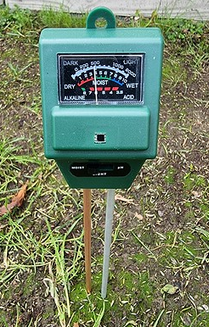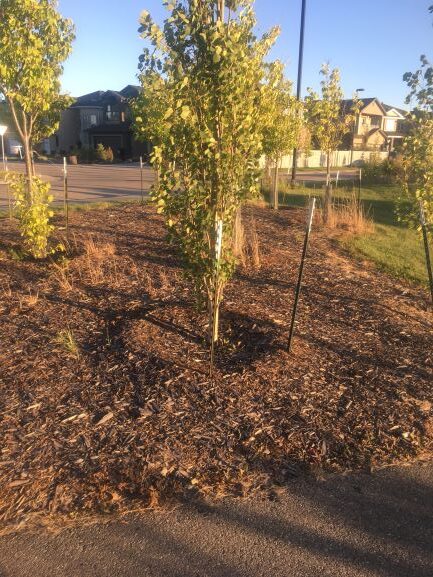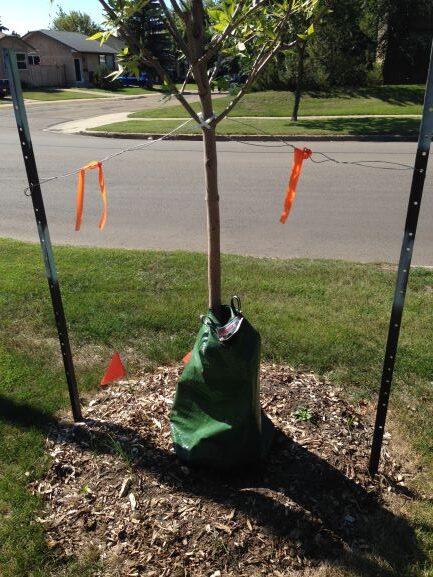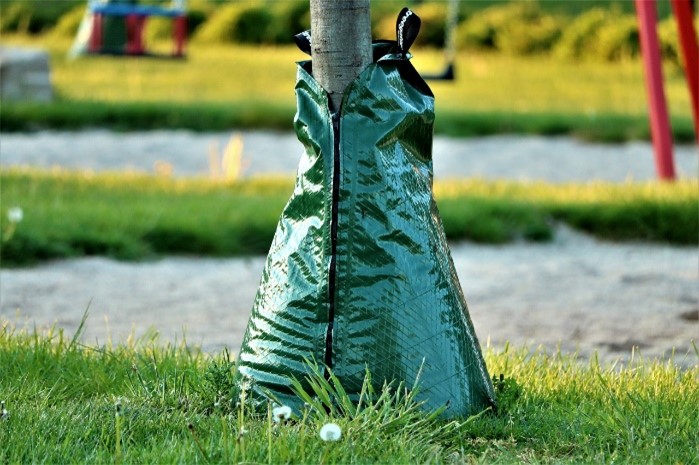Watering newly planted caliper trees is a critical aspect of their care, ensuring their survival and healthy establishment in the landscape. These young trees have limited root systems that are unable to access deep soil moisture, making consistent and proper watering essential during the establishment period, typically the first one to three years after planting.
All newly planted trees experience a period of stress(transplanting shock) as they adjust to their new environment. Tree transplanting shock is a common condition that occurs when a tree is moved from one location to another. This shock results from the disruption of the tree’s root system during the transplanting process, causing stress that impacts its ability to absorb water, nutrients, and maintain normal physiological functions. Proper watering promotes root development, and without sufficient water, trees may suffer from drought stress, leading to poor growth, leaf wilting, and increased susceptibility to pests and diseases.



How much water is needed?
First of all, there is no precise number on amount of water need for each tree. The amount of water required by a newly planted tree depends on several factors, including the tree species, size of planted trees, soil type, site exposure, local climate, and time of year. A general rule of thumb is to provide approximately 1 to 1.5 gallons of water per inch of trunk diameter measured at 6-inch height from ground. However, sandy soils drain quickly and may require more frequent watering, while clay soils retain moisture longer and may need less frequent applications. Adjust your watering practices based on the tree’s response and changing weather conditions.
Timing and Frequency
The timing and frequency of watering depend on the tree species, soil type, climate, and time of year. Always monitor soil moisture and adjust based on the specific needs of the tree and local conditions. All newly planted trees require a regular watering in first 3-5 years after trees planted.
Timing is critical when comes to watering trees. Generally, newly planted trees should be watered immediately after planting to eliminate air pockets around the roots and promote soil-to-root contact. Check the soil moisture by using soil tensiometer is one of the best ways to measure soil moisture. Also using metal probe 4-6 inches deep to see or fingers about 2-3 inches deep near the root ball—if it feels dry, it’s time to water.
Frequency of watering of newly planted trees or shrubs require more frequent watering than established trees and shrubs. In hotter weather or sandy soils, watering may need to be more frequent. Conversely, during cooler seasons or in clay-rich soils, reduce watering to avoid over-saturation. As the tree establishes itself over the first year, gradually reduce watering to once a week, depending on rainfall. During the warmer months, newly planted trees may need more frequent watering due to increased evaporation and transpiration. Depending on rainfall during growing season, below are general timing and frequency guidelines to water newly planted trees
- First 2 weeks – water daily
- 2-8 weeks after planting – every 2-4 days
- After 8 weeks of planting – water weekly depending, ensuring the soil remains consistently moist but not waterlogged.
Effective Watering
- Slow and deep watering – Newly planted trees benefit most from slow, deep watering. This encourages the roots to grow deeper into the soil, increasing the tree’s resilience to future droughts. A soaker hose, drip irrigation system, or a watering bag specifically designed for trees can deliver water slowly and effectively.
- Avoiding overwatering -Overwatering can be as harmful as underwatering. Excess water can lead to waterlogged soil, depriving roots of oxygen and potentially causing root rot. To prevent overwatering, check the soil moisture before watering. Stick your finger or a small trowel about 2–3 inches into the soil; if it feels damp, hold off on watering.
- Mulching to retain moisture -Applying a 3–5-inch layer of mulch around the base of the tree helps retain soil moisture, reduce evaporation, and regulate soil temperature. Be sure to keep mulch away from the tree trunk to prevent rot and pest problems.
Monitoring and Adjustments
Regular monitoring is key to ensuring proper watering. Leaves wilting can be caused by either overwatering or underwatering. Signs of under-watering include wilting, yellowing, or browning leaves, while overwatering may cause yellowing leaves that drop prematurely or a consistently soggy planting site. If your tree looks wilted, water it thoroughly and observe. If the leaves live up and invigorates within a few hours, the issue was likely insufficient water. However, if the leaves remain wilted, the problem is likely due to overwatering.
Some tree species prefer sandier and drier soils, such as variety of pines and spruces, Siberian larch, honey locust, Amur maple, European Mt. ash, silver buffaloberry, sea buckthorns and variety of roses are particularly sensitive to excess water and should not be planted in areas where water tends to pool.






